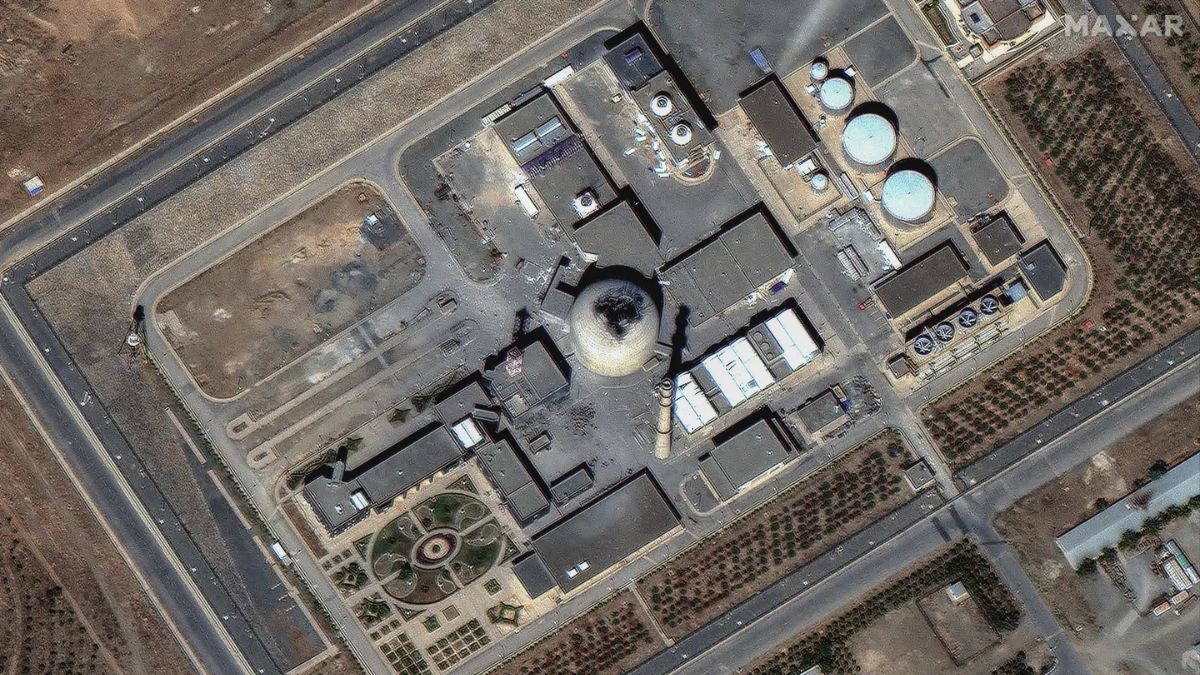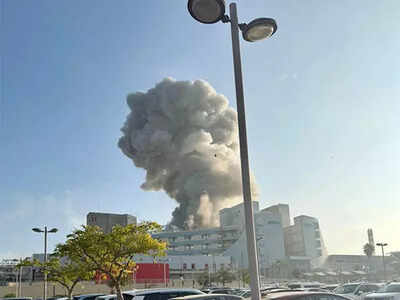Introduction
In a dramatic escalation of hostilities, Israeli warplanes have struck Iran’s Arak heavy water reactor, targeting key components that could enable plutonium-based nuclear weapons production. This unprecedented strike marks the seventh day of an intensifying military conflict between the two long-standing adversaries Arak heavy water reactor.
The Strategic Significance of Arak
)
The Arak heavy water reactor, located approximately 250km southwest of Tehran, has long been a concern for the West due to its potential to produce plutonium suitable for nuclear weapons. Under the 2015 Iran nuclear deal (JCPOA), Iran agreed to redesign the facility to prevent weapons-grade plutonium production. However, Israeli officials claim that Iran deliberately stalled full conversion of the reactor to maintain future weapons capability.
Black-and-white aerial footage released by the Israeli military shows a bomb penetrating the facility’s domed roof, followed by multiple explosions. Satellite imagery later confirmed extensive damage, including a large hole in the reactor building and destruction of adjacent heavy water distillation towers.
IAEA Confirms Reactor Was Hit But Contained No Nuclear Material
The International Atomic Energy Agency (IAEA) verified that the reactor was struck but reported no nuclear material was present at the time. Earlier, the IAEA noted that civil construction at the site was ongoing and that Iran expected the reactor to be commissioned by 2026.
Despite Iranian state TV reporting that the site was “secured in advance” with no contamination, the agency later confirmed significant structural damage, raising concerns over the future safety of the partially completed facility.
Simultaneous Israeli Strikes on Natanz and Isfahan
In addition to Arak, Israel simultaneously struck the Natanz uranium enrichment facility, Iran’s primary site for producing enriched uranium. The first wave of attacks destroyed the Pilot Fuel Enrichment Plant (PFEP), cutting power to underground enrichment halls, which may have caused severe damage to thousands of centrifuges, according to IAEA chief Rafael Grossi.
Four buildings at the Isfahan Nuclear Technology Centre were also destroyed, although Iran’s heavily fortified Fordo underground plant remains largely intact, for now.
Trump Weighs U.S. Military Action Against Fordo
Former President Donald Trump, who remains a key political figure in the U.S., is reportedly considering whether the U.S. should join in strikes on Fordo, which lies deep underground and requires specialized bunker-busting munitions. The U.S. remains the only nation possessing the GBU-57 Massive Ordnance Penetrator (MOP), potentially capable of destroying the fortified site.
Trump’s hardline stance follows his 2018 decision to abandon the JCPOA and reimpose crippling sanctions on Iran, prompting Tehran to incrementally breach the deal’s enrichment limits.
How Close Is Iran to a Nuclear Weapon?
The IAEA’s latest report warns that Iran has amassed enough uranium enriched up to 60% purity — just a short step from weapons-grade (90%) — to potentially build as many as nine nuclear bombs if fully enriched. Israeli Prime Minister Benjamin Netanyahu has justified the strikes, stating, “If not stopped, Iran could produce a nuclear weapon in a very short time.”
Iran Denounces Strikes as Illegal, Vows Retaliation
Iranian Foreign Minister Abbas Araghchi condemned the Israeli strikes as a “new red line violation in international law” while reiterating Iran’s longstanding position that its nuclear program remains peaceful. Iran officially denies seeking nuclear weapons, citing religious and legal prohibitions.

However, Israel — widely believed to possess its own undeclared nuclear arsenal — views Iran’s advancing capabilities as an existential threat. The recent strikes have also resulted in significant loss of life. Iran’s health ministry reports 224 casualties, while independent human rights groups estimate the death toll may exceed 639 fatalities.
Iran’s Retaliation: Hundreds of Ballistic Missiles Launched
In retaliation, Iran has launched hundreds of ballistic missiles at Israeli targets. Israel reports at least 24 fatalities on its side so far, as both nations brace for further escalations. The risk of broader regional war — potentially drawing in the U.S., UK, and other powers — is increasing daily.
Conclusion: A Critical Moment in Middle East Security
The strike on Arak underscores the rapidly escalating nuclear standoff between Israel and Iran. With both sides inflicting serious blows, and world powers scrambling to de-escalate the crisis, the coming days may prove decisive for regional stability — and for the future of nuclear non-proliferation efforts worldwide.
See full timeline of the Israel-Iran conflict here.

Further reading:
- BBC: Israel strikes unfinished Arak heavy water reactor in Iran
- The Morning News Informer: Iran’s Nuclear Program 2025
- Reuters: Israel Airstrikes Hit Iranian Nuclear Facilities
Join the Discussion
What should the international community do to prevent full-scale war? Share your opinions below and stay tuned for continuous coverage of this breaking crisis.









